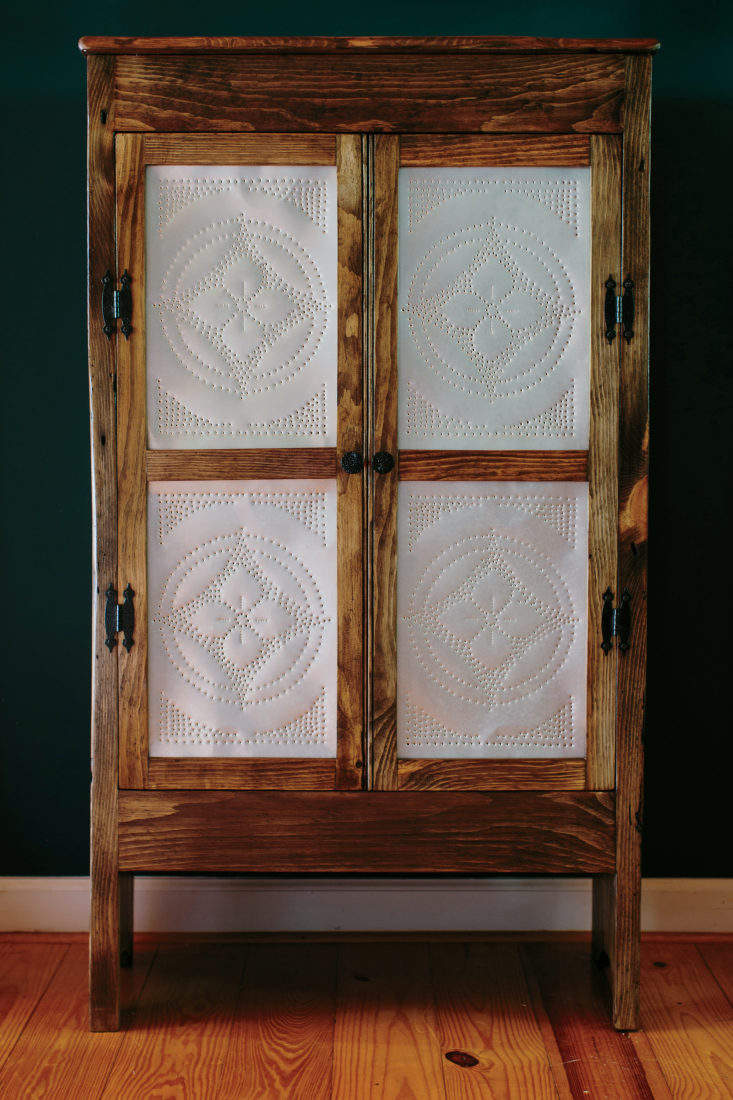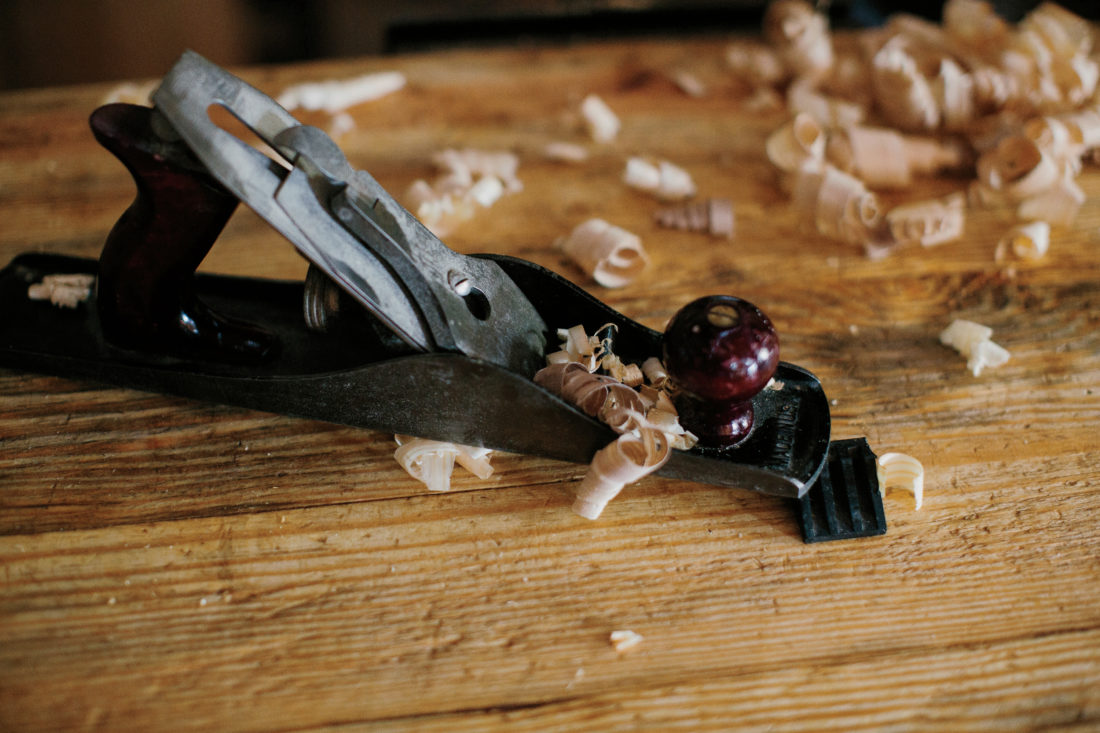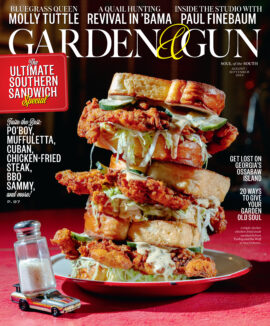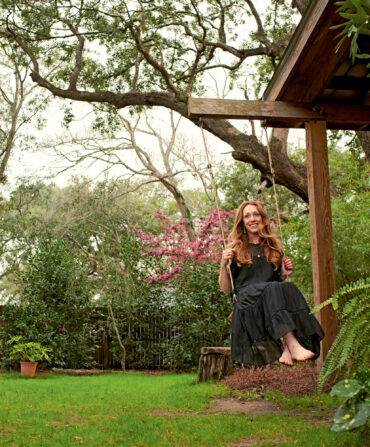During the early summer, as storms roared through the Southeast, a lightning bolt struck and felled a cherry tree on a farm in Hayesville, North Carolina. The farmer called the owner of a local sawmill to see if anyone could use it. The owner, in fact, knew just the guy.
Just across the state line in Sautee Nacoochee, Georgia, Jim DeVincentis runs Sautee Wood Works, a decidedly old-school wood shop, from his basement. Not only does he saw and plane his own lumber from fallen trees and salvaged wood, but he also uses it to build a signature piece of primitive-style furniture—the pie safe.

Photo: Andrew Thomas Lee
DeVincentis in his shop.
Widely used throughout the South in the eighteenth and nineteenth centuries to hold baked goods and other perishables, these standing cabinets have punched-tin doors that allow air to circulate inside but keep pests out. Collectors have sought out antique pie safes for years. One recently sold for $37,760 at Brunk Auctions in North Carolina. DeVincentis’s reproductions are significantly lower in price—custom safes start at $350—but that’s not because he’s cutting any corners. Working with his wife, Connie, who handles all the metalwork and finishing, he employs both old-time carpentry techniques and antique tools to create heirloom-quality pieces for clients across the country.
“If you order something, you might get antsy because it’s taking so long,” says DeVincentis in his happily cluttered workshop, a hand resting on a plane forged in 1870 that he’s using to bevel the frame of a pie safe door. “But we’re trying to stay as true to authentic as possible.”

Photo: Andrew Thomas Lee
A finished safe made of pine with a diamond petal design on the tin.
DeVincentis tackled his first pie safe two years ago. After he retired from his career as a software developer, he and Connie moved to a cozy cabin on a wooded hillside, where he started a small business restoring and refinishing antique furniture.
“Since I go to auctions a lot, I’m always looking for old books that have to do with woodworking or furniture,” he says. He found one published decades earlier by the Atlanta History Center as a companion volume for a show on “plain-style” furnishings of pre–Civil War Georgia. He was struck by a handsome piece fronted by six hammered tin panels featuring hole-punched designs of wheat shafts.
DeVincentis decided to reproduce the woodwork with reclaimed pine and antique hardware, while Connie set about learning the arduous craft of hand-punching tin. An eighteenth-century book Jim found at auction supplied a recipe for the finishing wax they used on the piece. “It’s a mixture of beeswax and carnauba wax with a few essential oils,” he says. “It gives the wood a satin finish and instantly adds patina.” The piece sold within days of his posting it online.

Photo: Andrew Thomas Lee
Connie hand-punches holes for each piece.
Soon, potential clients had found his online store and began proposing custom projects. A woman in Minnesota had him build one as a standing case for her harp.
The Hayesville cherry tree, sawed and sanded, has started to take form as a cabinet to be used as a linen closet for a customer in Colorado. It will make its way up and down the basement steps twice. Jim will send the completed frame and back panels upstairs, where Connie has turned the dining room into a finishing studio for staining and painting. After priming the wood, she will send it back downstairs, and while Jim assembles the door and installs the back panels and hinge hardware, she’ll get busy punching the tin panels. “Five hundred and seventy-two holes she has to punch!” he says, laughing. “Don’t think she’ll let me forget that number.”
After he installs the tin fronts, the pie safe cabinet goes back upstairs, where Connie will finish and wax every inside surface, just as woodworkers used to 150 years ago.

Photo: Andrew Thomas Lee
An antique hand plane.
For his part, DeVincentis always adds an extra, unexpected detail to each piece, such as a border of fine carved beading around the door frames. “It’s something I learned in the software business. I call it an ‘Easter egg’—a little something extra the customer wasn’t expecting.”
Whether designed to store baked goods or a client’s harp, each DeVincentis pie safe is unique and made to last. “You can pass it along to your children and say it was hand built by some guy in Georgia,” he says, admiring the wavy variation of the still-unfinished cherry grain. “That means something to me.”
For more information, go to sauteewoodworks.com.








